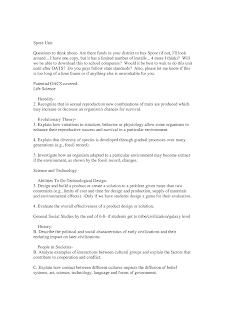I have the quarter off from teaching this course, so things have been a little slow. However, I am in a class right now (EPL 823) on issues in technology and education. This week, we are to present a Web 2.0 technology and discuss it's issues to teaching and learning. I chose blogging, in particular blogger, since that's what I'm using for this blog. And I chose to post it here because I think it has some relevance to this course.
1) First, a definition: Blog is short for weblog and is essentially an online journal. There are many free, formulaic blog applications (blogger, wordpress, livejournal, etc.) that make blogging today simple for anyone who wants to put content on the web in this form (no HTML experience needed). The tools are simple... sign up, fill in your profile information, click "new post" and start entering text, links, photos, videos, etc. If you want to get fancy, all of the blog applications have various widgets that can be added to your site (like a blogroll, tag cloud, news feed, etc.).
2) Issues related to using blogs in teaching and learning?
Good "issues"- For the most part, blogs can allow students to display work for a large interactive audience. Blogs can have multiple authors, so it could be used as a collaborative space among students on a project or to discuss their understanding of some concept over time. The public nature drives motivation because the content is no longer limited to a teacher and because they also have the opportunity to get feedback from others interested in their content. Blogging also has the potential to allow students and teachers to reflect on learning, identity, society, etc. and participate in a community of practice. This could lend itself to transferring formal learning to more authentic informal learning or vice versa (if a student had a blog at home to begin with). Teachers could also use blogs as a class website, pointing students to resources, summarizing lectures, sending out timely reminders about homework, creating dialogue with students about the content or the management of the class, etc.
Bad issues- The main negative within teaching and learning for blogs is the very issue that is a positive, the public nature. Blogs can elicit feedback, but it can also elicit unwanted contact or attention. For young students this is dangerous (though I am skeptical about the odds of this happening) and for teachers it could be career damaging depending on how reflective/honest a teacher is about their practice or feedback to other students. This moves "teacher talk" from the lounge and private comments written in red ink on paper to a persistent, searchable and copyable (to use danah boyd's terms) world. The same could be said for students, who are still forming their identity, and may regret their words years later.
3) As it relates to qualitative research-
Since this blog is on a qualitative research, a method where much learning takes place, I thing blogs are also a useful tool in this arena. A blog could be a space to document field notes, maintain a reflective journal, or dialogue with participants about issues related to research. Depending on the nature of the project, a blog could be kept private or it could be used as a means of member checking or as a way to have others in your field offer up opinions as the work occurs. Since blogs are intended to be used regularly, this could be a motivation to stay on top of data analysis and reflection
as it happens rather than putting it off only to try weeks or months later to recall what exactly your thoughts were that day.

 Plus a benefit of this one is that you can just copy and paste text, so you don't need to save your word doc as .txt.
Plus a benefit of this one is that you can just copy and paste text, so you don't need to save your word doc as .txt.
 In google docs, there is an option under "Share" that allows you to publish you doc as a webpage. This makes it available for anyone to view (without logging in!). Then, in order to link your image to a google doc, you can click on the actual image and make it a hyperlink (I did not do this above, but tried it below) or you can just make a link to the document in the usual way. Here is my link.
In google docs, there is an option under "Share" that allows you to publish you doc as a webpage. This makes it available for anyone to view (without logging in!). Then, in order to link your image to a google doc, you can click on the actual image and make it a hyperlink (I did not do this above, but tried it below) or you can just make a link to the document in the usual way. Here is my link.  Good question! I hope this helps. Let me know if anyone has found a better way or has any suggestions.
Good question! I hope this helps. Let me know if anyone has found a better way or has any suggestions.